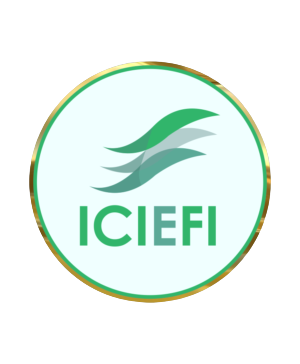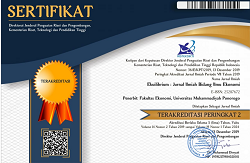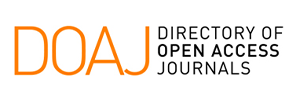Sector and Country Balance of Trade Analysis Based on World Input-Output Database: Indonesian Economy
DOI: 10.24269/ekuilibrium.v13i2.2018.pp109 - 129
Abstract
This paper analyses trade balance in Indonesian economy by using Indonesia input-output tables for the year 2000, 2005, 2010 and 2014. The results showed that, firstly, Indonesian export had been increased significantly during the year of study. Secondly, Indonesian import had also increased significantly during the year of study. Important sectors and countries’ trade partners of export and import had been indicated. Thirdly, trade balances in Indonesia economy were surpluses in all years of the study. Sectors and countries in which trade balances were deficits and surpluses had also been clearly indicated.
Keywords
References
- Adhi, A (2015). 80 Persen Industri Indonesia Disebut Dikuasai Swasta, Retrieved from http://surabaya.tribunnews.com/2015/03/03/80-persen-industri-indonesia-disebut-dikuasai-swasta.
- Burda, W (2005). Macroeconomics: A European Text, Fourth Edition, Oxford: Oxford University Press.
- Daniels, J, Radebaugh, L, Sullivan, D (2007).International Business: Environment and Operations, 11th edition, New York: Prentice Hall, ISBN 0-13-186942-6
- Hill, C.W.L (2015).International Business: Competing in the Global Marketplace, (15th ed.), New York: McGraw Hill, p.454.
- Jensen, R.C, Mandeville, T.D, and Karunaratne, N.D (1979). Regional Economic Planning: Generation of Regional Input-Output Analysis, Croom Helm, and London.
- Joshi, R. M (2005).International Marketing, New Delhi and New York: Oxford University Press.
- Joshi, R. M (2009). International Business, New Delhi and New York: Oxford University Press.
- Leonidou, L.C, Katsikeas, C. S, Palihawadana, D, Spyropoulou, S (2007).An Analytical Review of the Factors Stimulating Smaller Firms to Export: Implications for Policy‐Makers, International Marketing Review, 24 (6): 735–770.
- Lequiller, F and Blades, D (2006). Understanding National Accounts, Paris: OECD, pp: 139-143. Available at http://www.oecd.org/std/UNA-2014.pdf
- Levi, M. D (2009). International Finance: The Markets and Financial Management of Multinational Business, Fifth Edition, International Edition, New York: McGraw-Hill.
- Miller, R.E and Blair, P.D (1985). Input-output analysis: Foundations and Extensions, Englewood Cliffs, NJ: Prentice-Hall, Inc.
- Oosterhaven, J and Stelder, D (2007). Regional and Interregional IO Analysis, Faculty of Economics and Business University of Groningen, Groningen, the Netherlands.
- O'Sullivan, Aand Sheffrin, S. M (2003).Economics: Principles in Action, Upper Saddle River, New Jersey: Pearson Prentice Hall, pp: 462. ISBN 0-13-063085-3.
- Seringhaus, F. R (1990). Government Export Promotion: A global perspective, Routledge, p. 1.
- Stouraitis, V, Harun, M, Harris M, Kyritsis, M (2017). Motivators of SME Initial Export Choice and the European Union Regional Effect in Manufacturing, International Journal of Entrepreneurial Behavior & Research, 23 (1): 35–55.
- Timmer, M. P, Los, B, Stehrer, R and de Vries, G. J (2016). An Anatomy of the Global Trade Slowdown based on the WIOD 2016 Release, GGDC research memorandum number 162, University of Groningen, available at http://www.ggdc.net/ publications/memorandum/gd162.pdf.
- Timmer, M.P, Dietzenbacher, E, Los, B, Stehrer, R and de Vries, G.J (2015). An Illustrated User Guide to the World Input–Output Database: The Case of Global Automotive Production, Review of International Economics, 23(3): 575–605. DOI:10.1111/roie.1217.
- Timmer, M.P, Erumban, A.A, Gouma, R, Los, B, Temurshoev, U, de Vries, G.J, Arto, I, Genty, V.A, Neuwahl, F, Rueda‐Cantuche, J.M, Alejandro Villanueva, A, Francois, J, Pindyuk, O, Pöschl, J, Stehrer,R and Streicher,G (2012). The World Input‐Output Database (WIOD): Contents, Sources and Methods, Working Paper Number: 10, University of Groningen.
- Trinh, B, Hoa, P.L and Giang, B.C (2008). Import multiplier in input-output analysis, Depocen Working Paper Series No. 2008/23.
- Worldbank (2017). The World Bank In Indonesia: Having Maintained Political Stability, Indonesia is one of Asia Pasific’s Most Vibrant Democracies and Is Emerging as a Confident Middle-Income Country, Retrieved from http://www.worldbank.org/en/country/indonesia/overview.
Refbacks
- There are currently no refbacks.

This work is licensed under a Creative Commons Attribution-ShareAlike 4.0 International License.















